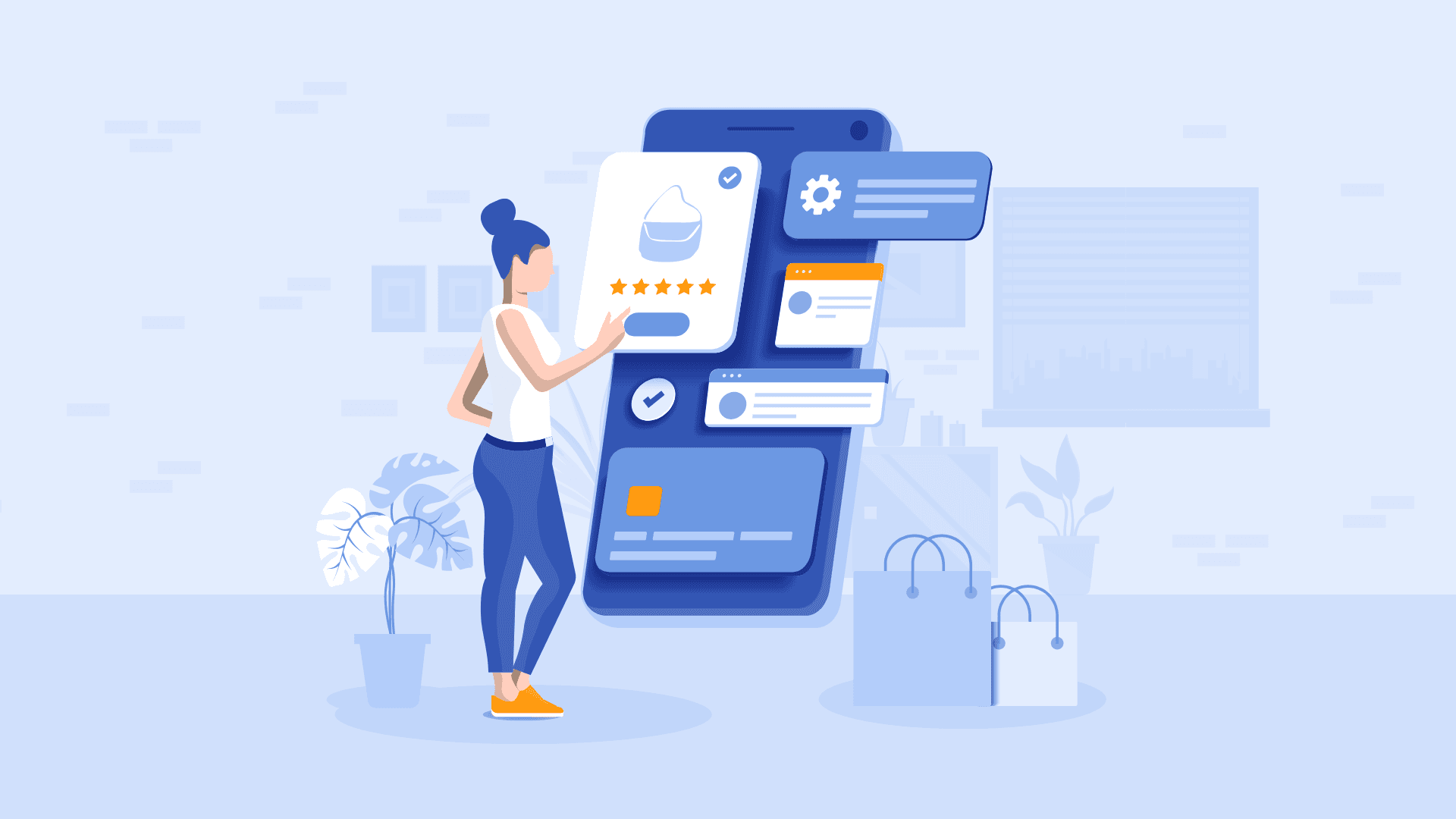Nov 2, 2020 | 7 minutes
How to Get Customers in Ecommerce? The Basics
A strategy that is aligned with your buyer base is the first step to answering the "How to get customers?" question. Let's take a look at it.

One of the biggest challenges of running an ecommerce store is getting enough people to buy from it. Customers don’t just appear from nowhere simply because a product is great.
While anyone is set for a lucky break every once in a while, it takes more than luck to scale a business.
So how exactly do you get your products out there and noticed?
Three words: Customer acquisition strategy.
A customer acquisition strategy is something that you should be thinking about from early on, as it is your money-making game plan.
In this article, we lay out the groundwork for a strategy that is sustainable and aligned with your buyer base, guiding you through everything you need to get the ball rolling in the right direction.
Let’s get started.
What is customer acquisition?
In the simplest of terms, customer acquisition is the process of getting new customers.
This sounds simple enough, but it is, in fact, a bit of a science. To get it right from the get-go, you need information on your customers, a model of buyer personas, and an understanding of the sales funnel as it applies to your niche.
We start from the ground up.
How to use data to get customers?
Data helps you know your customers. Without it, you don’t know who your customers are, what they are looking for, what they need from you, and how they expect you to deliver.
With data, and the right set of eyes to look at it, you can target your acquisition strategy, and reach the right customer. And this exactly is where your entire sustainable customer acquisition strategy should be pointing at.
So what data do you need to keep track of as an online retailer, and how can it guide your sustainable strategy? Let’s take a look.
Customer Acquisition Cost (CAC): CAC tells you just how much your costumes cost you, and how much value they bring. The CAC number helps you see if your efforts have an impact on the number of customers you are getting. If you are spending money that converts to paying customers, you are on the right track.
Traffic Sources: Knowing where your customers hail from is imperative. It allows you to see where you should invest more time and money, and where you should pull it out from.
Conversion Rate by Source: Looking at conversion rates segmented by source lets you know which channels convert, and which don’t. A thorough analysis of how conversions work for your business will let you improve resource allocation in a fast, efficient manner.
Revenue by Source: Tracking your revenue by source allows you to see which channel makes you the most money. It might not be the one with the most traffic, but it also might not be the one with the highest conversion rate. For example, your buyers from Google can spend the most overall, even though Google is neither your highest traffic source nor the highest conversion rate source.
Shopping Cart Abandonment Rate: Seeing the percentage of buyers who abandon their carts will tell you a lot about your store and customers. Cart abandonment occurs for a number of reasons, and taking a closer look can provide you with valuable insights to prevent it from happening any more.
Customer Lifetime Value (CLV): Knowing your CLV allows you to calculate how much money you can spend on each customer. Tracking this metric lets you predict how much money customers will bring in, which in turn lets you plan how much you can part with to get them.
Repeat Customer Rate: Understanding the nuances among your customers starts with knowing whether they are coming back to buy from you or not. Ideally, your repeat customer rate is high, which means that you have to spend less money on converting new customers.
Now, onto the first important question of the day: How to get this data?
The most common path starts by setting up Google Analytics for your site. Harvesting data with Google Analytics will be instrumental to create buyer personas, and we are going to look at why these are important next.
How to use buyer personas to get customers?
You can think of buyer personas as your target customers, but in avatar form. A buyer persona is a representation of your customers, based on aspects that are relevant to your business, such as:
Demographics
Psychographics
Specific behaviors
Buyer personas are the result of research and data, and once you get them right, they can serve as a reference point for all your customer acquisition efforts.
For example, a buyer persona can direct you to the specific channels your target customers use. With this information, you can decide to run targeted ad campaigns to reach them where they are.
Similarly, the buyer persona can show you how to solve your customers’ pain points, and so, what to sell. Mapping out your buyer personas, their needs and pains will simplify the task of delivering solutions to the problems your buyers have.
So how can you build buyer personas after you start to collect the right data? As a rule of thumb, each profile has to include the following:
Basic Information: Age, gender, income, interests, education level, occupation.
Goals: The personal and professional goals your customers want to achieve.
Pain Points: Problems and obstacles your customers encounter trying to reach their goals.
Behaviors: Customer actions that are relevant to your business. Which social media channels do they use, how do they shop, what kind of marketing strategies do they respond to?
Crafting buyer personas helps you define your customers. The next step is to understand the sales funnel you will want to send them down through.
What is a sales funnel and why does it matter in customer acquisition?
A sales funnel is a process that maps out the customers’ journey all the way from when they first find out about your product/service, to when they purchase it.
It works much like a real funnel does- by narrowing as you move down it. It has four basic stages of Awareness, Interest, Decision, and Action.
Awareness: This is the widest category at the top of the funnel. At this stage, prospects are learning about you and what you have to offer. They might have landed on your store page after clicking on a social media ad or after hearing about you from a friend. The whole point of the Awareness stage is to drive enough traffic to your store, build brand awareness, and generate leads.
Consideration: At this stage, the prospects have turned into leads and they are weighing their options and considering a purchase with you. This is the time to start building relationships. They have perhaps signed up to your email list, which gives you the opportunity to send them more information about your products and services, showing them that you have exactly what they are looking for.
Decision: The leads have narrowed down their options, and are close to making the final decision. At this stage, you want to give them every reason to buy from you. You can do this by educating them on your products or showing them how to use it. The goal is to make your product irresistible and within reach.
Action: This is where the funnel is at its narrowest. Leads are ready to take action, and it’s up to you to convince them that that action is buying from you. Convert those leads to paying customers by offering discounts, special deals, or unique content.
As the sales funnel moves from awareness to action, the pool of buyers shrinks. This means that the pool becomes more niche, making it easier for you to target your acquisition efforts and tactics.
The messaging of each stage of the funnel differs, and the buyers’ journey for niches varies too. Having enough information about your target customers will be your guiding light in this labyrinth.
If you are able to predict buyer behaviors and lead customers on a purchasing path, you are doing the funnel right.
But the fun doesn’t end there. After you’ve scored first-time customers, your task is to nourish your relationship with them so that they stay with you. Even though retention isn’t strictly a part of the customer acquisition strategy, it is good to keep in mind the stages that come after you’ve closed the deal.
Conclusion
Customer acquisition is central to any business, and it’s not a question of whether you do it, but how well you manage to plan and execute it.
By understanding the value of data and what it tells you about customers, by building the right buyer personas that reflect your goals, and by understanding and embracing the sales funnel, you build a solid base for a successful and sustainable plan to get customers.
One thing is clear: you have to be selective about your acquisition channels, and smart about the workflows that go into them.
After that is done, you'll be closer to automating your customer acquisition efforts with Make. Until then, happy strategizing!

